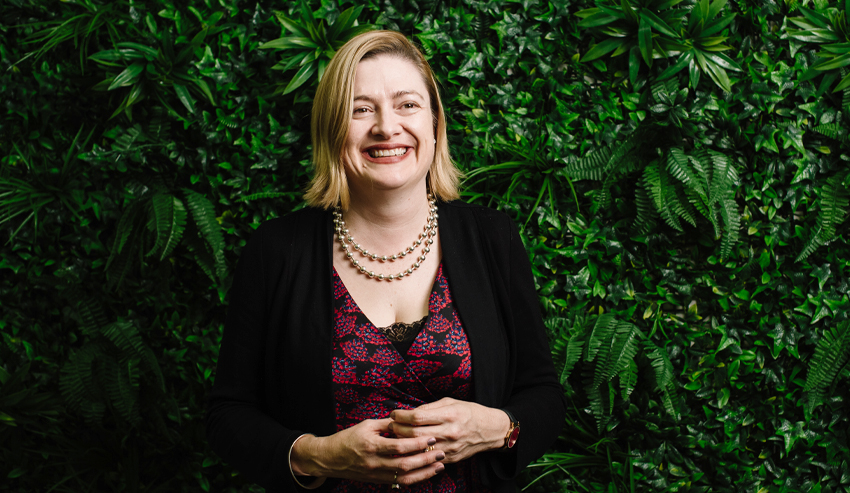Science and technology is rapidly evolving and changing the way both civilians and militaries function in the modern era. For Chief Defence Scientist Professor Tanya Monro, innovation and technology will provide Australia with the tactical and strategic advantages in the modern battlespace.
To continue reading the rest of this article, please log in.
Create free account to get unlimited news articles and more!
Science gives us the tools to theorise, predict, observe and experiment. It allows us to be curious, to extend our knowledge, solve problems and develop new technologies. Science is the art of the possible.
We are searching for truth and solutions, and the best way to search for the truth is together, to solve our problems co-operatively. Everyone has their own unique strengths and skills, and to solve the complex challenges that face us we need to all work together, to harness our collective strength and abilities.
Australia faces an increasingly complex and contested environment. Science, technology and innovation will be critical to ensuring our service men and women maintain a strategic advantage across the full spectrum of Defence capabilities.
Defence Science and Technology Group is Australia’s second largest national science agency with just over 2,000 staff. My focus is to bring together interdisciplinary expertise from across Australia, from universities, co-operative research centres, academies and industry.
The only way we will solve some of Australia’s most pressing problems is through harnessing the innovation potential of our nation. Partnership is key to our success.
Our ‘More, together. Defence science and technology strategy 2030’ recently launched by the Minister for Defence Linda Reynolds, outlines our vision for Defence science and technology over the next decade. At its heart, the strategy is about focus, scale and impact.
We are focusing on larger science and technology programs that support Defence’s strategic priorities.
We are scaling up, partnering with the national science and technology enterprises and international alliances, to harness the research expertise across Australia.
The impact of our mission-focused research will be a capability edge, for our Australian Defence Force, through streamlined and secure innovation pathways.
To be successful, our strategy relies on outstanding people, culture, collaboration and research infrastructure.
Traditionally much of Australia’s research has been driven from the ground up. Our new strategy seeks to invert that process. Our strategy has established ‘missions’ that focus and align Australia’s science and technology research efforts to develop capabilities. They have been designed to unlock our creativity, shape our research and development system and set the platform for leap-ahead sovereign capabilities.
We’ve turned our missions into STaR Shots – Science, Technology and Research shots that focus on eight of the biggest problems we need to solve for our Australian Defence Force. You can find our STaR Shots on the Defence Science and Technology website.
Over the next decade, we will partner with Australian businesses, from start-ups and small business to national enterprises. Our state-based university networks are uniquely positioned within Australia’s science and technology landscape to forge strong links between Defence, industry, government and academia.
Our new Defence Science Partnerships agreement with all 37 of Australia’s public universities will enable collaboration and innovation. A robust, resilient and internationally competitive Australian defence industry is critical to our vision.
Just what can be achieved when Defence partners with universities and industry has been demonstrated as our nation responds to the COVID-19 pandemic.
Our Defence scientists and engineers have worked hand-in-glove with universities and industry on converting existing non-invasive ventilators to invasive ventilators; designing face shields for frontline healthcare workers and contributing to virus pandemic modelling provided to the Australian Health Protection Principal Committee.
Our ability to respond quickly and deliver results was due in large part to the deep and trusting relationships we have with our partners, and it demonstrated to me just how critical these relationships are, both at the executive level and in the engineering labs.
As we partner and work collaboratively in a mission-orientated way to deliver the capabilities that Australia needs, we will grow the alignment of Australia’s research to our priority challenges.
We are focused on delivery and outcomes and just as the space race and moon landing gave us innovations such as Teflon, freeze-dried foods, and flame-resistant clothing, I expect that our STaR Shots will deliver powerful new technologies that will have valuable uses for Defence, and possibly unanticipated ones in health, agriculture, mining, and environmental protection.
Together, we will build new capabilities in research and industry, high-value jobs in science, technology, engineering and maths for women and men. Building our strengths, research will play an important role in setting-up Australia for economic success over the next decade.
Professor Tanya Monro commenced as Chief Defence Scientist in March 2019. Professor Monro was previously deputy vice chancellor research and innovation and an ARC Georgina Sweet Laureate Fellow at the University of South Australia.
Professor Monro was the inaugural director of the Institute for Photonics and Advanced Sensing (IPAS) from 2008 to 2014 and was also the inaugural director for the ARC Centre of Excellence for Nanoscale Bio Photonics (CNBP) at the University of Adelaide.
Her research is in the field of photonics, with a focus on sensing, lasers and new classes of optical fibres. Professor Monro obtained her PhD in physics in 1998 from the University of Sydney, for which she was awarded the Bragg Gold Medal for the best Physics PhD in Australia.
In 2000, she received a Royal Society University Research Fellowship at the Optoelectronics Research Centre at the University of Southampton in the UK, and is also an inaugural Bragg Fellow of the Royal Institution of Australia (RiAus).
Professor Monro is a Fellow of the Australian Academy of Science (AAS), the Australian Academy of Technology and Engineering (ATSE), the Optical Society of America (OSA) and the Australian Institute of Physics (AIP).
She is member of the Board of the Commonwealth Scientific and Industrial Research Organisation (CSIRO) and the South Australian Economic Advisory Council.

 Login
Login







